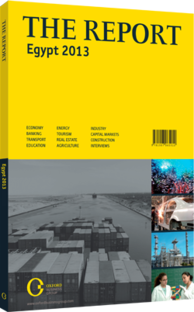OBG talks to Osman Saifullah Khan, CEO, SAIF Group

Interview: Osman Saifullah Khan
To what extent can Egypt increase its competitiveness with low-cost Asian textile producers?
OSMAN SAIFULLAH KHAN: The availability of good quality long-staple Egyptian cotton, a banking sector willing and able to offer competitively priced funding, a large and relatively inexpensive labour force, and a cheap and reliable power supply were some of the factors behind our decision to invest in Egypt. The country’s geographic location, its proximity to European markets, as well as favourable market access arrangements with the EU and the US, led us to believe that Egypt had the potential to emerge as a global centre in textile manufacturing.
Today China has most of the market. The textile business, being a very competitive and in some ways a low value-added sector, has moved around to where costs are lowest. Even China is currently pricing itself out of certain segments of the business as it moves into electronics and higher value-added industries. This is an opportunity for other destinations that can offer a cost-competitive package, countries like Pakistan, India and Vietnam, among others. Egypt can seize on this opportunity, though it will need to address cost pressures and issues with labour productivity and training.
What do you see as some of the biggest challenges to operating a labour-intensive business in Egypt?
KHAN: Labour unrest has been a key challenge and has manifested itself through strikes, shut downs, and marked upward pressure in wages through a shortage of skilled labour. Only time will tell whether this has been a transient phenomenon or whether it will pose a longer-term hurdle to Egyptian competitiveness.
Egypt needs a total revamp of labour laws, which protect the rights of workers but also allow industry to create employment opportunities, so that jobs are created for Egyptians. Existing laws are quite complex. The government also needs to work closely with industry and academia to ensure that Egyptians have the necessary skills that industry needs, so that the national workforce stands as a productive and competitive one.
In what ways can Egypt leverage better access to labour and export markets?
KHAN: Egypt has all the market access it could ask for but has not really capitalised on this. At the cost of repetition, I think you need to address manpower issues on a priority basis because this is a very labour-intensive sector. Part of the solution also lies in allowing for the import of immigrant labour, say for a five-year window. Egypt must also export its own labour to the Gulf, where Egyptians have a competitive advantage in training and language skills, as well as to import labour from South Asia for the textile sector.
How can the government attract more investment to the industrial sector?
KHAN: Egypt has so much potential, but much needs to be done to unleash it. Companies engaged in yarn manufacturing in Alexandria, for instance, currently face restrictions regarding from which countries they can import cotton, a key raw material in the yarn trade. There was a time when Pakistan had the same policy. Remember that Pakistan is the world’s fourth-biggest cotton producer. Today, however, Pakistan allows the import of cotton from any location. If companies were allowed to buy cotton from wherever it was most cost competitive, they could extend their product range, capture new markets and ultimately increase their investment in productive capacity. Egypt would be the big winner. Likewise, the government can work with industry on improving labour productivity competitiveness and market flexibility, while ensuring that labour rights are protected. Where needed, it might also allow for the import of labour from other countries.
The General Authority for Investment and Free Zones needs to be further strengthened in order to solve all the genuine problems faced by foreign investors in the country. The concept of free zones needs to be revitalised, and these should be in locations where the government provides the infrastructure but otherwise treads very lightly in terms of its overall regulatory role.
You have reached the limit of premium articles you can view for free.
Choose from the options below to purchase print or digital editions of our Reports. You can also purchase a website subscription giving you unlimited access to all of our Reports online for 12 months.
If you have already purchased this Report or have a website subscription, please login to continue.

